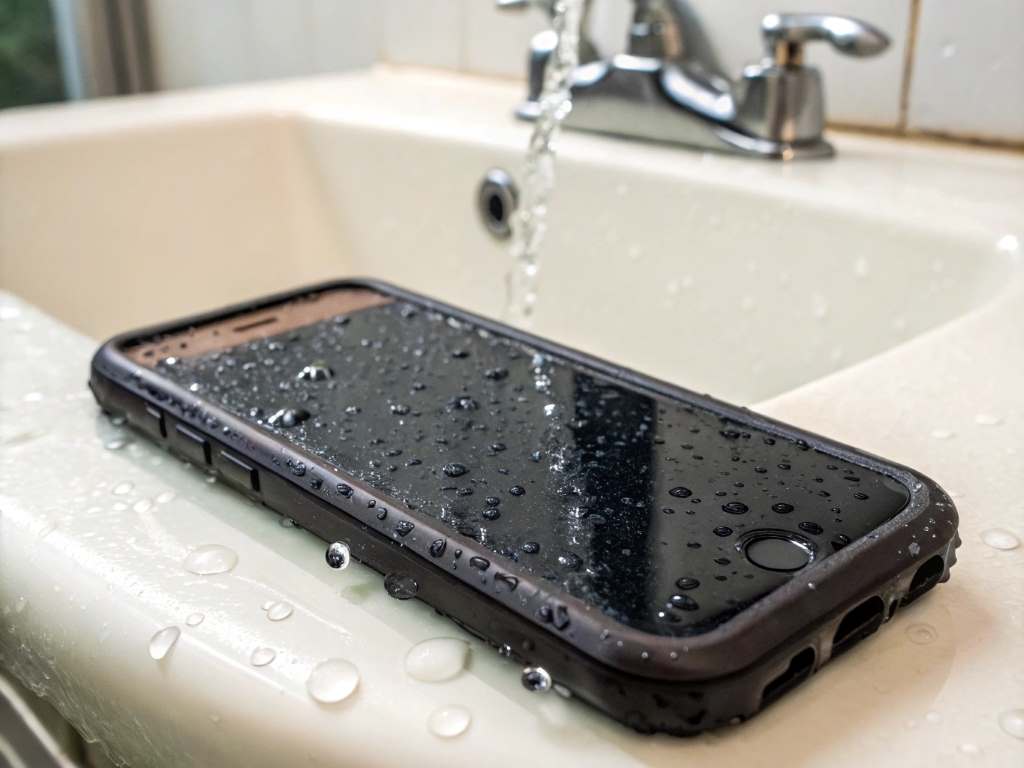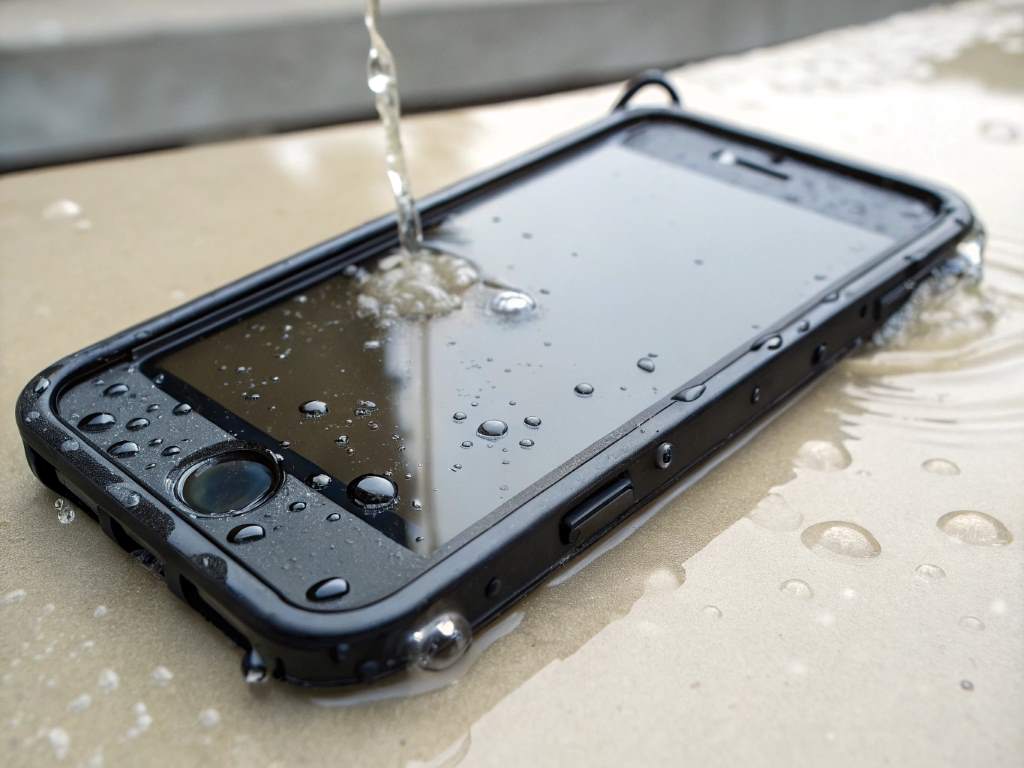Smartphones are essential for daily life, but water damage can ruin them. Waterproof phone cases promise protection, yet leaks still happen. Understanding leaking risks is vital to safeguard your device. In 2023, over 30% of phone repairs were due to water damage, according to iFixit. Many users trust cases blindly, only to face costly repairs later. I learned this the hard way when my phone got soaked during a beach trip, despite using a “waterproof” case. This blog post explores why leaks occur, how to prevent them, and tips to keep your phone safe. By the end, you’ll know how to choose and use a case effectively. Let’s dive in and protect your device.
What Causes Waterproof Phone Case Leaks?
Waterproof phone cases can fail for several reasons. Manufacturing defects, like weak seals, are common culprits. Wear and tear over time also weakens cases, allowing water to seep in. Improper use, such as not sealing the case correctly, increases risks. Additionally, extreme conditions, like high water pressure during diving, can overwhelm a case’s limits. A 2022 study by Consumer Reports found that 25% of tested waterproof cases failed under moderate water pressure. Environmental factors, like sand or dirt, can compromise seals too. My beach incident happened because sand got lodged in the case’s seal, letting water in. Knowing these causes helps you take preventive steps when you choose a smartphone.
Common Leak Causes
- Defective seals: Poor manufacturing leads to weak or uneven seals.
- Wear and tear: Cracks or stretched seals from regular use.
- User error: Not closing the case properly before exposure.
- Extreme conditions: High pressure or prolonged submersion.
- Debris: Sand, dust, or dirt clogging the seal.
How to Choose a Reliable Waterproof Phone Case
Selecting a quality waterproof case reduces leaking risks. First, check the IP rating, like IP68, which indicates water resistance depth and duration. For example, IP68 cases can handle submersion up to 1.5 meters for 30 minutes. Next, read reviews from trusted sources like TechRadar or CNET. Look for cases with strong seals and durable materials, such as polycarbonate or silicone. Avoid cheap, unbranded cases, as they often lack proper testing. Also, ensure the case fits your phone model perfectly, as ill-fitting cases leak easily. I now choose cases with clear IP ratings and user feedback, which saved my phone during a recent kayaking trip. Spending a bit more on a reputable brand is worth it.
Tips for Choosing a Case
- Verify IP rating: Ensure it matches your needs (e.g., IP68).
- Read reviews: Check feedback on seal quality and durability.
- Check compatibility: Confirm the case fits your phone model.
- Prioritize materials: Opt for sturdy, high-quality materials.
- Avoid unbranded cases: Stick to trusted brands for reliability.
Proper Use and Maintenance of Waterproof Cases
Using and maintaining your case correctly is crucial. Always test the case without your phone by submerging it in water for a few minutes. Check for leaks before trusting it. When sealing the case, ensure no debris is present and press firmly to secure it. After water exposure, dry the case thoroughly to prevent trapped moisture. Regularly inspect seals for cracks or wear, replacing the case if needed. Additionally, avoid exposing the case to extreme temperatures, as heat can warp seals. I make it a habit to clean my case weekly, which has kept it leak-free. Proper care extends the case’s life and ensures protection.
Maintenance Tips
- Test regularly: Submerge the empty case to check for leaks.
- Clean seals: Remove debris before sealing the case.
- Dry thoroughly: Wipe and air-dry after water exposure.
- Inspect seals: Look for wear or damage monthly.
- Replace when needed: Don’t use a damaged or old case.
Risks of Using a Leaking Waterproof Case
A leaking case can cause serious damage. Water can ruin your phone’s circuits, leading to malfunctions or total failure. Repair costs can range from $100 to $500, depending on the model, per iFixit’s 2023 data. Data loss is another risk, as water damage can corrupt files or photos. Moreover, a wet phone may short-circuit, posing a safety hazard. Leaks can also void warranties, leaving you with no recourse. My beach mishap cost me $200 in repairs and lost vacation photos, a lesson I won’t forget. Beyond phones, leaks can damage accessories like earbuds stored with the device. Understanding these risks emphasizes the need for vigilance.
Potential Consequences
- Phone damage: Water ruins circuits, causing malfunctions.
- High repair costs: Fixes can be expensive or impossible.
- Data loss: Photos, contacts, or files may be unrecoverable.
- Safety hazards: Short-circuits can cause shocks or fires.
- Warranty issues: Water damage often voids warranties.
Tips to Prevent Leaks
Preventing leaks requires proactive steps. First, always test your case before use, especially for water-heavy activities like swimming. Double-check seals for debris and ensure a tight closure. Avoid pushing the case beyond its limits, such as deep diving if it’s not rated for it. Use a lanyard to keep the case secure during water sports. Additionally, store your phone in a waterproof bag for extra protection in harsh conditions. I now carry a backup waterproof pouch when boating, which gives me peace of mind. Finally, replace cases every 12–18 months, as seals degrade over time. These steps minimize risks effectively.
Leak Prevention Tips
- Test before use: Submerge the empty case to confirm it’s watertight.
- Check seals: Ensure no dirt or sand is present before closing.
- Know limits: Don’t exceed the case’s depth or duration rating.
- Use a lanyard: Secure the case during water activities.
- Replace regularly: Get a new case every 12–18 months.
What to Do If Your Case Leaks
If your case leaks, act quickly to minimize damage. First, remove the phone from the case and power it off immediately. Dry the exterior with a cloth and remove any moisture from ports using a towel. Place the phone in a bag of uncooked rice or silica gel for 24–48 hours to absorb moisture. Avoid charging or turning on the phone until it’s completely dry. If it doesn’t work, visit a professional repair service. My quick response after my beach incident saved my phone from permanent damage. Document the leak and contact the case manufacturer, as some offer warranties. Fast action can make a big difference.
Steps After a Leak
- Power off: Turn off the phone to prevent short-circuits.
- Dry exterior: Wipe with a dry cloth or towel.
- Absorb moisture: Use rice or silica gel for 24–48 hours.
- Avoid charging: Don’t plug in a wet phone.
- Seek repairs: Visit a professional if the phone fails.
Conclusion
Waterproof phone cases are valuable, but they’re not foolproof. Leaks can happen due to defects, misuse, or wear, leading to costly damage or data loss. By choosing a reliable case, maintaining it properly, and following preventive tips, you can minimize risks. My experience with a leaking case taught me to test and inspect cases regularly, saving me from future mishaps. Stay proactive by testing your case, checking seals, and knowing its limits. Your phone is an investment—protect it wisely. Share your tips or experiences in the comments below or spread the word by sharing this article. Let’s keep our devices safe together.
FAQs
Why do waterproof phone cases leak?
Leaks occur due to defective seals, wear, debris, or exceeding the case’s water resistance limits.
How can I test my waterproof case?
Submerge the empty case in water for a few minutes and check for any water inside.
What should I do if water gets into my phone?
Power off, dry the exterior, and place it in rice or silica gel for 24–48 hours.
How often should I replace my waterproof case?
Replace it every 12–18 months or sooner if you notice wear or damage.
Are all waterproof cases safe for diving?
No, only cases with high IP ratings, like IP68, are suitable for diving within their limits.

